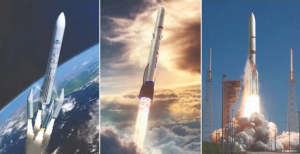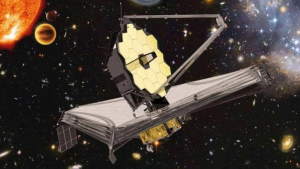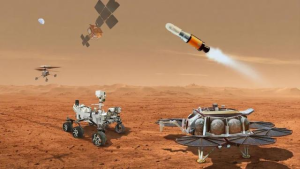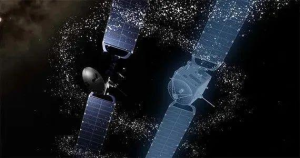Recently, due to delays in the first flights of many of the rockets it ordered, Amazon had to book three launch services with SpaceX in order to speed up the deployment of the Kuiper Internet constellation. Looking back on 2023, a series of major international space projects have been postponed, including the United States “return to the moon” and the return of Mars samples from the United States and Europe. What are the reasons? What methods can aerospace workers from various countries take to try to regain project progress?
Constellations encounter “pigeons.”
We usually use “letting go” to describe breaking one’s trust. In this way, Amazon has “created sufficient redundancy” for the Kuiper Constellation launch plan but found that the progress of a series of new rockets lagged behind and was forced to face the long-standing problem of delays in aerospace projects. It can be described as encountering a “pigeon flock.”

The three rockets contracted by Kuiper Constellation have repeatedly postponed their first flights
The goal of the Kuiper constellation is to launch a network of at least 3,236 satellites into low-Earth orbit, and after deploying the first 578 satellites in 2024, it will provide broadband Internet services to compete with SpaceX’s Starlink constellation. The latter has launched more than 5,000 satellites, its services cover almost the whole world, and its progress is far ahead.
In 2019, Amazon announced an investment of US$10 billion in the “Kuiper Project” and obtained a launch license in July 2020. However, U.S. approvers require Amazon to launch at least 50% of its satellites, or 1,618 satellites, by July 2026, and all satellites must be launched by 2029.
To this end, Amazon launched the largest commercial procurement of space launch services in history on April 6, 2022, booking 83 rocket launches from Ariane Space, Blue Origin and United Launch Alliance, and plans to All satellites of the Kuiper constellation are launched into Earth orbit.
Among them, Amazon has signed 38 Vulcan-Centaur rocket launch services with United Launch Alliance, each launching 45 satellites; Amazon has signed 18 Ariane 6 rocket launch services with Ariane Space, each launching 35 to 40 satellites. Satellites; signed 12 New Glenn rocket launch services with Blue Origin, retaining options for 15 more launches, each launching 61 satellites.
In addition, Amazon purchased RS1 rocket launch services from ABL Space Systems for the deployment of two prototype satellites and nine Atlas 5 rocket launch services from United Launch Alliance in 2021 as a “guarantee measure.”
However, the first flight of the RS1 rocket failed at the beginning of this year, the first flight of the Ariane 6 rocket was postponed from the end of 2020 to mid-2024, and the first flight of the Vulcan-Centaur rocket has been postponed to early 2024. As for the New Glenn rocket, which has been under development since 2012 and was originally scheduled to fly in 2020, there is still no exact timetable for its first flight. These “pigeons” forced Amazon to launch two prototype satellites weighing only a few hundred kilograms on October 6 this year using the Atlas 5 rocket with a more than 8 tons capacity in low-Earth orbit. At the end of this year, it was forced to launch a rocket launch to the “imaginary enemy” SpaceX The company bowed its head.
Delays are common
Looking at the aerospace programs of various countries, major aerospace projects have generally experienced repeated delays in progress, the most famous of which is James Webb Space Telescope.

Rendering of Webb Space Telescope soaring into the universe
From the first time the United States planned the “next generation space telescope” in 1989 to “Webb” initially expected to fly into space in 2005, and then to its launch at the end of 2021, the project has been postponed more than 20 times, and the cost has increased from the original estimated cost of US$500 million. It has risen all the way to nearly 10 billion US dollars, and the “highlights” of delays are almost as famous as its powerful performance and great achievements.
In fact, the reason why the “Vulcan” and “New Glenn” were originally selected by the Kuiper Constellation have become the famous “Doves” among the new generation rockets is closely related to the BE-4 engine responsible for Blue Origin.
The BE-4 liquid oxygen methane engine has been under development since 2011 and was originally scheduled to be ready in 2017. However, the development progress of this engine has been slow, and there have been frequent reports of various component failures. In early 2019, the entire precombustion chamber-turbopump system was even “replaced and restarted.” After that, it was still unable to work stably at the rated thrust level for a long time.
After the first batch of BE-4 flight-stage engines rolled off the assembly line, United Launch Alliance was delayed for several years in order to regain the Vulcan-Centaur rocket. Earlier this year, it equipped the rocket’s first stage with two BE-4 engines. A short static ignition test was conducted, claiming to have reached an important milestone.
However, on June 30 this year, the third BE-4 engine that would be used for the second Vulcan-Centaur rocket verification flight exploded during a ground ignition test. This accident has added huge uncertainty to the future of the Vulcan-Centaur rocket because this rocket is expected to be certified by the U.S. Space Force only after two successful launches.
Compared with the Vulcan-Centaur rocket, which requires two BE-4 engines, the New Glenn rocket developed by Blue Origin is planned to be equipped with seven BE-4 engines. The dependence is even more serious, and its future is still unclear. It is estimated that if Blue Origin wants to ensure uninterrupted supply, it must produce dozens of BE-4 engines every year, which obviously faces huge difficulties.
As the main role of ESA in space launches in the 2020s, the situation of the Ariane 6 rocket is even more complicated. In 2014, the European Space Agency officially established the Ariane 6 rocket as the main force of the new generation and adopted a large number of mature technologies of the Ariane 5 rocket in the hope of reducing development risks. However, the supporting products of this type of rocket involve many interest disputes within the EU. Too many companies are involved in the supply chain and product delivery times are uneven, which greatly affects the project’s overall progress. Moreover, construction work such as updating test and launch modes and launch facilities at the launch site have frequently been delayed.
The delays in major aerospace projects that attract more attention in 2023 are undoubtedly the two major deep space exploration missions in the West. At the end of November, the U.S. Government Accountability Office released a report on the “Artemis Program” and concluded that even with additional budget, the “Artemis-3” manned lunar landing mission is unlikely to be launched before 2027; NASA’s earlier goal of “returning astronauts to the moon” by the end of 2025 lacks feasibility.
The main reasons given in the report include the fact that the manned lunar module based on the “Starship” developed by SpaceX and the supplementary version of the “Starship” mid-mission are progressing slowly. After all, the “Starship” has not yet been put into orbit, and it is too late. According to the original plan, the new lunar landing space suit developed by Axiom Space Company was not progressing smoothly and it was difficult to wear and test it in time.

Schematic diagram of the US-EU cooperative Mars sample return mission
In addition, an independent review panel under NASA issued a warning about its plan to return samples to Mars in cooperation with the European Space Agency. The plan was finalized four years ago, and the hope was to collect about 600 grams of samples from Mars and send them back to Earth. According to the report, the initial estimated cost of the Mars sample return program was US$4.4 billion, which has now risen from US$8 billion to US$11 billion.
According to the original plan, the United States will launch a Mars lander in 2026, and the lander (which may include a Mars rover and a Mars drone) and ascender are expected to land on Mars in August 2028. However, problems such as sampling technology mean that the spacecraft will not be launched earlier than the summer of 2028, and the entire mission is expected to be completed no earlier than 2033. As for the more complicated process of docking in Mars orbit, transferring samples, and returning them to Earth, as well as the coordination issues between the United States and Europe, the same is not optimistic.
Will eventually be more “punctual”
Many aerospace projects have experienced project management delays such as progress being delayed repeatedly, funding rising repeatedly, and even targets falling again and again.
The root cause of “disaster” is the high complexity of aerospace technology and the extreme requirements for product function and performance.
As we all know, aerospace products must overcome numerous challenges in complex environments during launch, including high temperature, high pressure, vibration, noise, impact, etc. After entering space, aerospace products still need to experience “scouring” such as solar wind and cosmic rays, and are repeatedly tempered by high and low temperatures, high and low pressures. At the same time, with the increasing emphasis on economy, aerospace products must also pursue extreme lightweight, leading to the selection of safety factors that are not too conservative. These contradictory requirements that must be carefully weighed have made the technical solutions for aerospace products more complex, and too many key technologies need to be tackled to achieve targets.

Simulation technologies such as digital twins help aerospace product development
In contrast, the current technical level is still insufficient for aerospace products’ simulation and prediction capabilities. The scientific research process requires a large number of trial production, test links, and even physical flight tests to verify the correctness of the design. This means that simply designing aerospace products by so-called “standard methods and requirements” is not enough to ensure reliability, and rework and delays are inevitable.
Although there are many difficulties, with the advancement of aerospace technology and the vigorous development of commercial aerospace, which promotes the expansion of the industrial chain, the problems of difficult management and difficult progress control of aerospace projects will eventually be effectively solved.
With the development of the times, the aerospace industry has become more open and the trend of broad social participation has become increasingly obvious. Some advanced aerospace technologies have gradually transformed from “dragon-slaying skills” monopolized by a handful of countries to daily necessities that have been commercially developed and popularized and “fly into the homes of ordinary people,” widely serving the lives of the public.
In the future, aerospace products are expected to be more fully integrated into the huge industrial system, with features such as mass manufacturing, streamlined and smooth testing processes, modularity, easy replacement and upgrade, and abundant spare parts. By then, aerospace projects, like construction projects, will be easier to control and the risk of delays will be reduced.
This article was originally published in “China Aerospace News Feitian Science Weekly”


